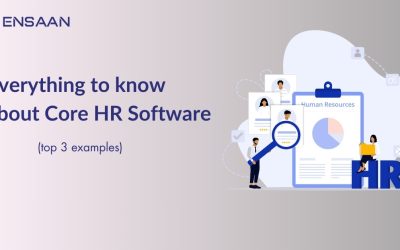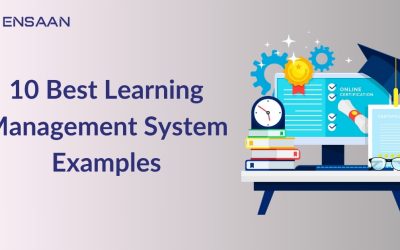HR departments and hiring managers mostly depend on technology in today’s hectic recruiting market to speed up the hiring process and raise candidate involvement.
The Applicant Tracking System (ATS) and Candidate Relationship Management (CRM) software are two essential instruments in today’s recruitment process.
Although the goal of both tools is to increase hiring efficiency, they have different functions and focus on other aspects of the talent acquisition process.
We’ll go over 11 important distinctions between ATS and CRM in this blog post to assist you decide which one is right for your hiring requirements.
Table of contents
- ATS vs CRM : Key Main Differences
- 1. Function and Objective:
- 2. Stage of the Recruitment Process:
- 3. Candidate Engagement ATS:
- 4. Database vs. Talent Pipeline ATS:
- 5. Emphasizing Candidate Relationships:
- 6. Automated Features:
- 7. Emphasis on Active vs. Passive Candidates ATS:
- 8. Reporting and Data Analysis:
- 9. Long-Term Talent Strategy ATS:
- 10. System Integration:
- 11. Expense and Capital Outlay:
- Conclusion
ATS vs CRM : Key Main Differences
1. Function and Objective:
ATS: Managing active candidates during the hiring process is the main goal of an application tracking system.
It is made to manage job advertisements, review resumes, follow applicants through the interview process, and make sure that hiring procedures are compliant with the law.
Even in the absence of a current job vacancy, candidate relationship management, or CRM, is a proactive technique for developing and maintaining long-term relationships with possible applicants.
CRM facilitates talent pool maintenance, candidate engagement, and hiring needs pipeline creation for businesses.
2. Stage of the Recruitment Process:
After a candidate submits an application for a position, an ATS is frequently used.
It ensures that active applications are processed effectively by managing the full recruiting funnel from application to hire.
CRM: A candidate does not apply or a job vacancy occurs before a CRM is used. Its job is to keep in touch with inactive applicants so that businesses can get in touch with competent staff when openings occur.
3. Candidate Engagement ATS:
Transactional interactions are the norm for engagement within an ATS.
Emails or updates about the progress of their applications, scheduled interviews, or job offers are sent to candidates.
CRM: A CRM approaches candidate engagement in a more comprehensive manner. With individualised emails, newsletters, invitations to professional events, and customized content, it provides resources to help develop relationships over time.
CRMs maintain contact even in the absence of open positions, which contributes to a better applicant experience.
4. Database vs. Talent Pipeline ATS:
An applicant tracking system functions as a candidate database, storing data about applicants.
Although it contains resumes, cover letters, and information related to jobs, it isn’t intended for ongoing communication with candidates once the recruiting process is over.
CRM: By keeping in touch with both active and passive prospects, a CRM aims to create a talent pipeline.
In order to guarantee that the company has pre-qualified leads to get in touch with when a position arises, it generates candidate profiles with information about prior contacts, engagement history, and applicant preferences.
5. Emphasizing Candidate Relationships:
ATS: Platforms for ATS give process management precedence over fostering relationships.
The objective is to as swiftly and effectively as possible filter, screen, and oversee the hiring process for current applicants.
CRM: CRM systems give the relationship element top priority, highlighting long-term engagement of possible prospects.
Rather than being designed for short-term process management, they are meant for strategic candidate nurturing.
6. Automated Features:
ATS: Automating tasks including as keyword matching, resume processing, applicant tracking, and scheduling of interviews is the purpose of ATS systems.
They facilitate the management of hundreds of applications at once and streamline the recruitment process.
CRM: CRM systems manage follow-up emails, invitations to events, and customised material to maintain prospective employees’ interest in your business over time.
Additionally, these technologies aid in automating the tracking of interaction histories and candidate categorisation.
7. Emphasis on Active vs. Passive Candidates ATS:
The candidates who have applied for a position at your organisation are the primary focus of an ATS.
It guarantees these candidates’ smooth advancement through the hiring process.
CRM: A CRM is intended for passive applicants, or people who are not actively looking for work but are nonetheless receptive to offers.
The CRM makes sure that your business is at the forefront of these prospects’ minds when they decide to change careers by keeping them engaged.
8. Reporting and Data Analysis:
ATS: Automated recruiting systems (ATS) are designed to report on certain recruitment-related data, like time-to-hire, number of applicants per position, and job posting success rate.
This aids HR departments in determining hiring effectiveness.
CRM: CRMs offer data analytics with an emphasis on metrics related to candidate engagement, including email open rates, click-through rates, candidate response times, and engagement levels across the talent pool.
This aids HR departments in evaluating the state of their connections with candidates and pinpointing areas where their long-term candidate engagement strategies need to be strengthened.
9. Long-Term Talent Strategy ATS:
An ATS is made to help a business with its immediate hiring requirements.
The system advances to the next open position when a post is filled. It’s quite effective for hiring specific jobs.
CRM: A long-term tool for talent acquisition strategy is a CRM.
It assists HR departments in building and maintaining talent pools, guaranteeing that businesses have a consistent supply of competent applicants to draw from at any time.
10. System Integration:
ATS: To find active candidates, a number of ATS solutions interface with social media, job boards, and other recruitment tools like Indeed, LinkedIn, or Glassdoor.
After a candidate is hired, these technologies might also interface with HR software to facilitate onboarding.
CRM: CRM platforms frequently interface with email platforms, ATS systems, and marketing automation platforms.
In order to enable recruiting teams cultivate more positive relationships with passive talent and move engaged prospects into the applicant tracking system (ATS) when they apply for a position, the aim is to create a seamless engagement experience.
11. Expense and Capital Outlay:
ATS: Because an ATS processes job applications on a large scale, it is frequently seen as an essential tool for every recruitment team.
As a result, depending on a company’s size and recruiting volume, the cost of an ATS may differ.
CRM: A CRM is more of a calculated investment for businesses looking to develop a proactive hiring approach.
Because of the sophisticated relationship-building aspects, the prices are frequently greater; yet, having a talent pipeline may pay out in the long run.
Conclusion
While they have different purposes, both candidate relationship management (CRM) software and applicant tracking systems (ATS) are essential components of contemporary hiring practices.
An ATS can be the best option if your main goal is to manage applications effectively and fill open positions as soon as possible.
However, a CRM is a superior choice if your goal is to develop lasting relationships with potential applicants and establish a strong talent pipeline.
Knowing these 11 important distinctions between ATS. vs CRM will enable you to decide whether tool, or whether a combination of both would work best for your recruitment strategy.
Selecting the best option will help you recruit top talent both now and in the future, streamline your hiring procedures, and engage applicants more successfully.
















